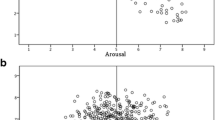Abstract
The quantity and placement of surface electromyography cathodes have been concentrated broadly because of the need to improve the exactness of the order they complete of the expectation of development. By and by, expanding the quantity of channels utilized for this characterization frequently builds their preparing time too. This exploration work pays with a correlation of the grouping exactness dependent on the diverse quantity of surface electromyography signal put in the correct lower appendage of solid subjects (Human Beings). The examination is performed utilizing Zero Crossings (ZC), Mean Absolute Values (MAV), Slope Signal (SS), and Waveform Length (WL); these qualities contain the component vector. The calculation utilized for the arrangement is the SVM subsequent to applying a PCA to the highlights. The outcomes demonstrate that it is conceivable to arrive at over 95% of order precision by utilizing 11 or 10 channels. Also, the distinction got for 1500 tests-sample for 9, 10 and 11 channels, isn't higher than 4%, which implies that expanding the quantity of channels doesn't ensure 99.5% accuracy in the order. Therefore, these classification results the better understanding of Orbicularis Oris (OO), Buccinator (B), Zygomaticus (Z), and Risorius (R) Muscle contraction during speech of deaf and dumb patients.



Similar content being viewed by others
References
Afsharipour, B., Soedirdjo, S., & Merletti, R. (2019). Two-dimensional surface EMG: The effects of electrode size, interelectrode distance and image truncation. Biomedical Signal Processing and Control, 49, 298–307.
Al-Ani, A., Koprinska, I., Naik, G. R., & Khushaba, R. N. (2016). A dynamic channel selection algorithm for the classification of EEG and EMG data. In 2016 International Joint Conference on Neural Networks (IJCNN), 4076–4081. https://doi.org/https://doi.org/10.1109/IJCNN.2016.7727730
Alizadeh, J., Vahid, A., & Bahrami, F. (2016, November). Recognizing subjects who are learned how to write with foot from unlearned subjects using EMG signals. In 2016 23rd Iranian Conference on Biomedical Engineering and 2016 1st International Iranian Conference on Biomedical Engineering (ICBME),331–335. https://doi.org/10.1109/ICBME.2016.7890982
Al-Timemy, A. H., Bugmann, G., Outram, N., & Escudero, J. (2011). Single channel-based myoelectric control of hand movements with Empirical Mode Decomposition. In 2011 Annual International Conference of the IEEE Engineering in Medicine and Biology Society, 6059–6062. https://doi.org/10.1109/IEMBS.2011.6091497
Ceseracciu, E., Reggiani, M., Sawacha, Z., Sartori, M., Spolaor, F., Cobelli, C., & Pagello, E. (2010, September). SVM classification of locomotion modes using surface electromyography for applications in rehabilitation robotics. In 19th International Symposium in Robot and Human Interactive Communication, 165–170. https://doi.org/10.1109/ROMAN.2010.5598664
Cortes, C., & Vapnik, V. (1995). Support-vector networks. Machine Learning, 20(3), 273–297.
Deny, J., & Sudharsan, R. R. (2020). Block Rearrangements and TSVs for a Standard Cell 3D IC Placement. Intelligent Computing and Innovation on Data Science (pp. 207–214). Singapore: Springer.
Dunteman, G. H. (1989). Principal components analysis (No. 69). Sage.
Englehart, K., & Hudgins, B. (2003). A robust, real-time control scheme for multifunction myoelectric control. IEEE transactions on biomedical engineering, 50(7), 848–854.
Krishna, R. R., Kumar, P. S., & Sudharsan, R. R. (2017). Optimization of wire-length and block rearrangements for a modern IC placement using evolutionary techniques. In 2017 IEEE International Conference on Intelligent Techniques in Control, Optimization and Signal Processing (INCOS), 1–4. https://doi.org/10.1109/ITCOSP.2017.8303081
Oskoei, M. A., & Hu, H. (2006). GA-based feature subset selection for myoelectric classification. In 2006 IEEE International Conference on Robotics and Biomimetics, 1465–1470. https://doi.org/10.1109/ROBIO.2006.340145
Purushothaman, G., & Vikas, R. (2018). Identification of a feature selection-based pattern recognition scheme for finger movement recognition from multichannel EMG signals. Australasian Physical & Engineering Sciences in Medicine, 41(2), 549–559.
Raj, S., & Ray, K. C. (2017). ECG signal analysis using DCT-based DOST and PSO optimized SVM. IEEE Transactions on instrumentation and measurement, 66(3), 470–478.
She, Q., Luo, Z., Meng, M., & Xu, P. (2010). Multiple kernel learning SVM-based EMG pattern classification for lower limb control. In 2010 11th International Conference on Control Automation Robotics & Vision, pp. 2109–2113. https://doi.org/10.1109/ICARCV.2010.5707406
Sudharsan, R. R. (2019). Synthesis of FIR Filter using ADC-DAC: A FPGA Implementation. In 2019 IEEE International Conference on Clean Energy and Energy Efficient Electronics Circuit for Sustainable Development (INCCES), 1–3. https://doi.org/10.1109/INCCES47820.2019.9167696
Sudharsan, R. R., & Deny, J. (2020). Field Programmable Gate Array (FPGA)-Based Fast and Low-Pass Finite Impulse Response (FIR) Filter. Intelligent Computing and Innovation on Data Science (pp. 199–206). Singapore: Springer.
Sudharsan, R. R., Deny, J., Kumaran, E. M., & Geege, A. S. (2020a). An Analysis of Different Biopotential Electrodes Used for Electromyography. Journal of Nano- and Electronic Physics, 12(1), 1–7.
Sudharsan, R. R., Deny, J., Muthukumaran, E., & Selvi, S. C. (2020b). Design, implementation, and estimation of MFCV for 4-different position of human body using FPGA. Microelectronics Journal, 105, 104890.
Sudharsan, R. R., Deny, J., Muthukumaran, E., & Varatharajan, R. (2020). FPGA based peripheral myopathy monitoring using MFCV at dynamic contractions. Journal of Ambient Intelligence and Humanized Computing, 1–9.
Vuskovic, M., & Du, S. (2002). Classification of prehensile EMG patterns with simplified fuzzy ARTMAP networks. In Proceedings of the 2002 International Joint Conference on Neural Networks, IJCNN'02 (Cat. No. 02CH37290, 3, 2539–2544. https://doi.org/10.1109/IJCNN.2002.1007543
Yang, M., Zheng, H., Wang, H., & McClean, S. (2009, April). Feature selection and construction for the discrimination of neurodegenerative diseases based on gait analysis. In 2009 3rd International Conference on Pervasive Computing Technologies for Healthcare, 1–7. https://doi.org/10.4108/ICST.PERVASIVEHEALTH2009.6053
Author information
Authors and Affiliations
Corresponding authors
Additional information
Publisher's Note
Springer Nature remains neutral with regard to jurisdictional claims in published maps and institutional affiliations.
Rights and permissions
About this article
Cite this article
Deny, J., Raja Sudharsan, R. & Muthu Kumaran, E. An orbicularis oris, buccinator, zygomaticus, and risorius muscle contraction classification for lip-reading during speech using sEMG signals on multi-channels. Int J Speech Technol 24, 593–600 (2021). https://doi.org/10.1007/s10772-021-09816-0
Received:
Accepted:
Published:
Issue Date:
DOI: https://doi.org/10.1007/s10772-021-09816-0




